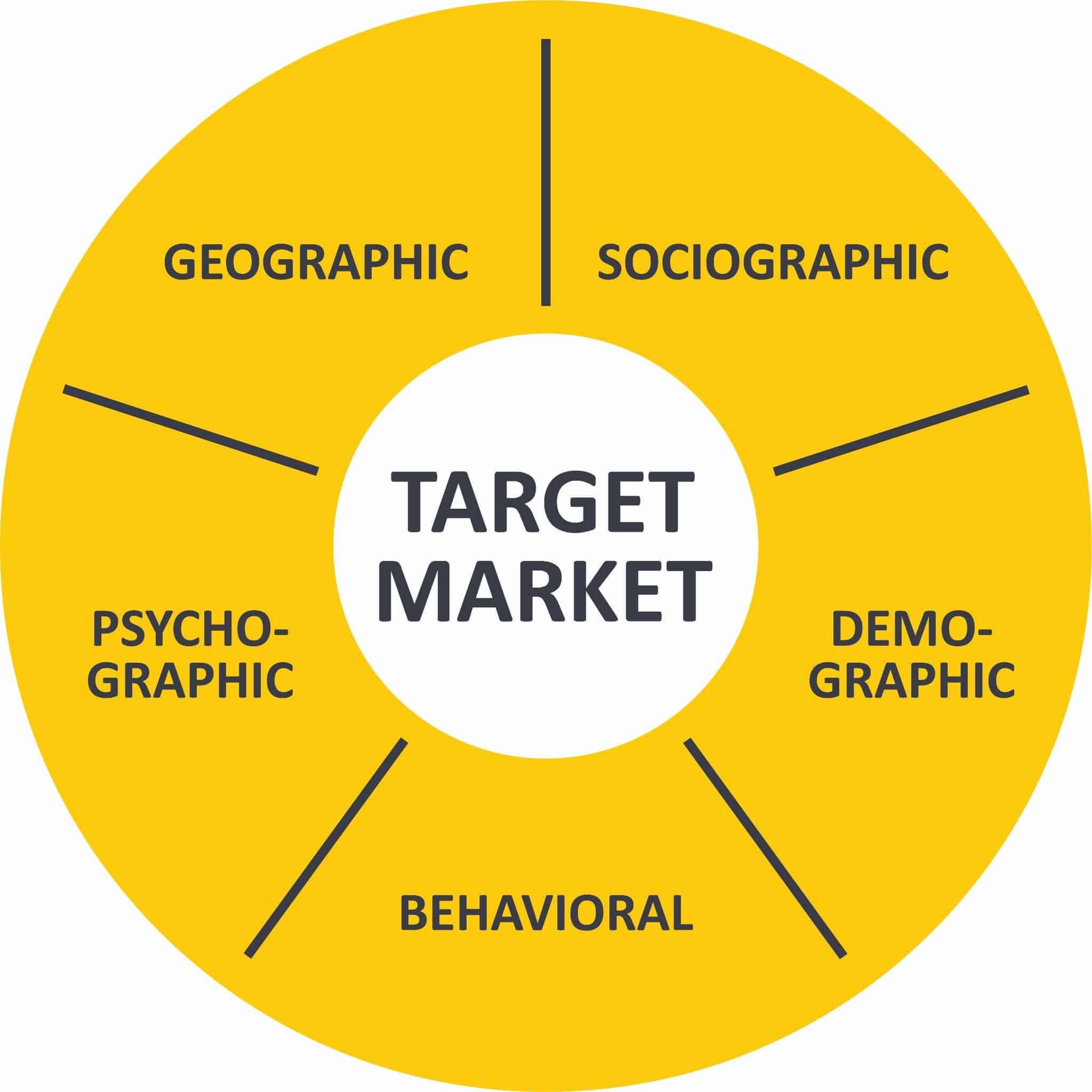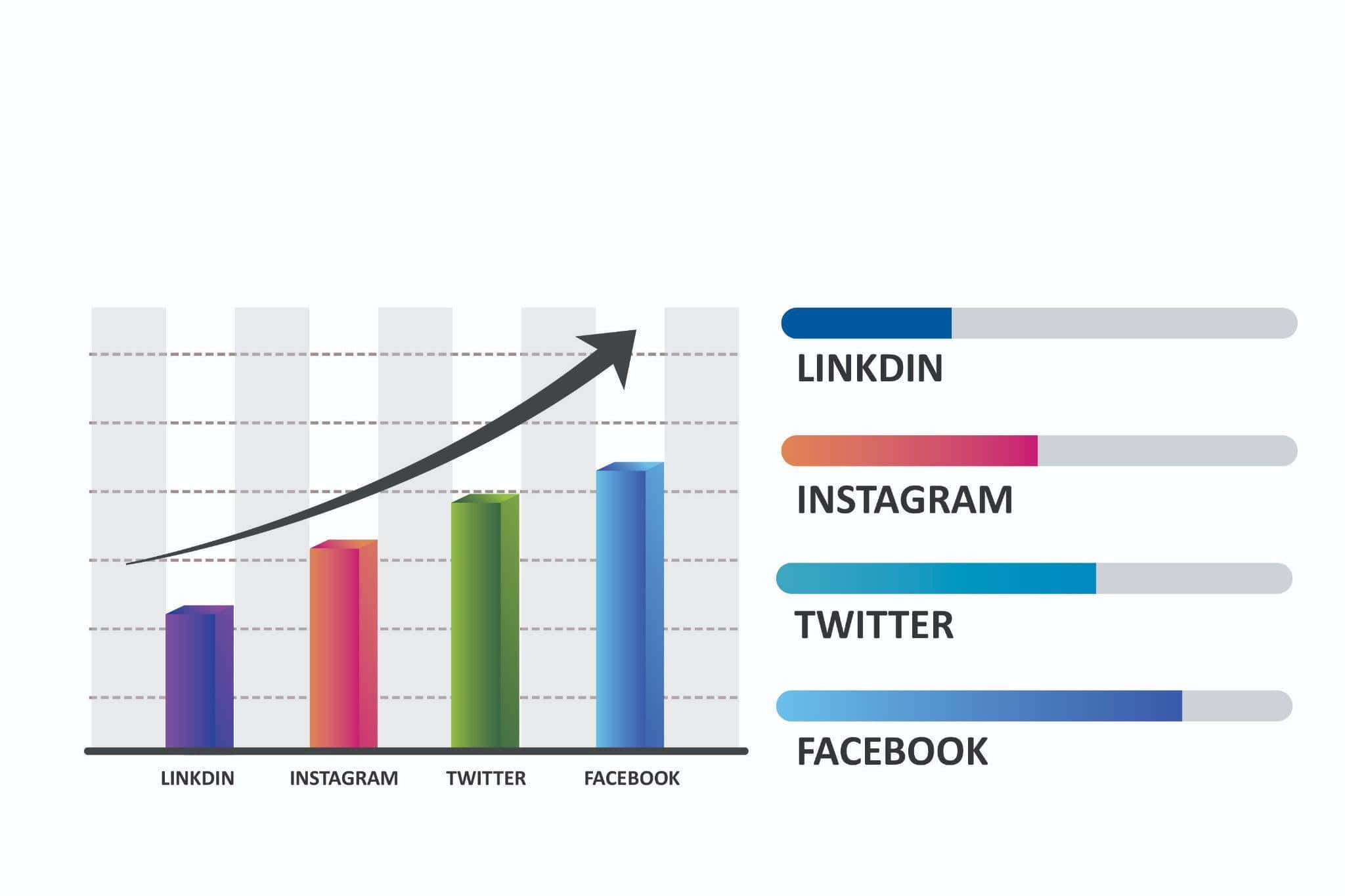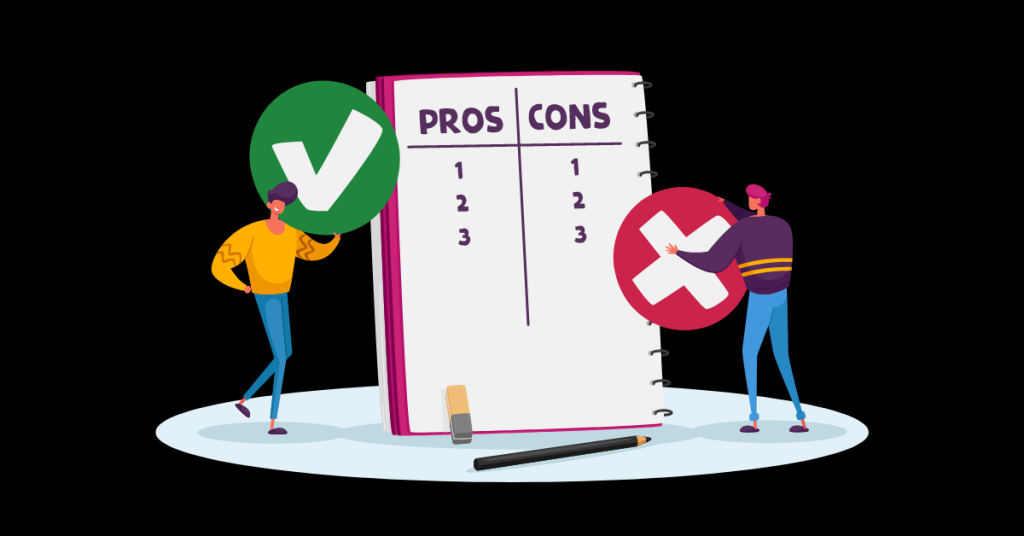In this blog, learn about the pros and cons of social media for small business.
The world of small business can be hard work to achieve goals and grow.
Owners and employees often excel at performing many roles.
The daily requirements of sales, operations, payroll, billing, service, and fulfillment require a great deal of time and energy.
Something that is expressed is marketing.
The marketing mix for a small business often covers the essentials and things that are closer to the bottom line.
These are often identified as the website and campaigns that affect the generation of sales or lead closest to the last click or conversion. Those include things like email marketing, SEO, and paid search.

Social media is often left out of that mix or is only done in a way that meets a minimum to show that the business is real.
Social media doesn’t have to be a massive commitment or time investment. It also doesn’t have to be a big mystery as to how it could impact the business and fit into the marketing mix.
By working smarter not harder, you can use these tips to put together a social media strategy that makes sense for the resources you have and can ultimately engage your audience and positively impact your business. In addition to optimizing your social media strategy, consider leveraging nearshore software development to enhance your business operations. This approach not only reduces costs but also improves communication and collaboration by working with teams in nearby regions. For a comprehensive guide on this topic, visit our page on nearshore software development.
1. Identify People
There are a ton of resources out there that talk about the personal development process and how it can help you with content marketing and the overall marketing strategy for your business.

If you haven’t defined who the target audience is for your products, services, or offers, then you should start here.
You don’t have to go through a massive branding or research project to get the information you need.
If you don’t know where to start, we suggest jumping into your current Google Analytics account and turning on the interests section, and seeing what affinity groups show up.
If you can’t afford the luxury of current data, you can dig into the Google Ads ad planner and Facebook ad planning tools to explore options for interests, demographics, and behavior, and see how categories and orientation fit with your understanding of your customers or clients
By using either functional or refined models of specific personas, you can save time and fine-tune your social media messaging and targeting to cast the right size web and be specific enough with your content.
2. Know the customer journey (Customer Journey)
We all usually know best about which step or two is best for driving engagement, sales, or leads. It can be a specific marketing channel, a campaign, or even a category of content.

The problem is that most companies don’t have a one-click customer journey that translates into a sale on their first visit.
The customer journey can be a bit difficult to get the whole picture, but there are ways to see what content your audience is interested in before they convert and you can talk to them to see what they find valuable in making their decision. Moreover, you can use different small business packaging ideas to give a portray of your product.
There are reporting platforms that can tie it all together, but at the very least, you should get some visibility into the steps in the funnel that customers ultimately go through as they research before they buy.
3. Track everything
If you’re having trouble with the first two tips, you probably don’t have as much data or information as you’d like. I’m glad you kept reading and got here.
Tracking and measurement are critical to digital marketing. The same way that tracking your online invoice will help you get paid on time, recording all of your data will help you arrive at a better overall result.

Without capturing data, you stick with using industry trends or just make your best guess based on what you know about your industry and things that work in the offline world.
Make sure all pages on your site are tracked in Google Analytics.
Make sure all content you’re deploying to email, social media, and other sources uses UTM tracking parameters so it can be properly categorized in Google Analytics.
Find ways to use promo codes and other source codes to combine offline and online data.
The more you can track and measure, the more informed you can be as you assess the value of your time and money in your investment in content, specifically when you deploy it through social media. By employing tools like the Trevozo Receipt Maker, businesses can streamline their financial processes, ensuring accuracy and efficiency in their operations. Additionally, consider utilizing Web Design Services Invoice Templates to further enhance your business’s financial documentation.
4. Use agile methods
Ebooks, white papers, webinars, and long-form content can be the perfect thing to use to engage your audience.
However, these are all big investments that need to be made at the content creation stage, even before implementation.

A great way to test social networks and determine the right types of content, posting frequency, targeting options (for sponsored and ad content), timing, etc. is to run smaller, more frequent tests.
Agile marketing has become a valuable strategy in recent years. It has an agile mindset similar to what you would expect in software development and other disciplines.
As a small business, you probably don’t have the time or budget for statistically significant sample size, so go with a wide range of content and options and see what works before investing heavily in a single piece of content or strategy. the only one by which you plan to judge the viability of social as a channel.
5. Reuse content
Whenever possible, you could and should look for opportunities to leverage existing content and sources.
If you created a great blog post as part of your SEO strategy, give it a try on social media!
If you’re creating content for your email audience, reuse some of it on social media.
By using content in more than one place, you can get a better ROI for individual pieces of content, plus get more data and see how it performs across multiple channels.
Also, just because something is evergreen or a suggestion isn’t new, that doesn’t mean it’s not for your audience.
As long as the information is accurate and relevant, there is no harm in sharing something that has been on your site for a couple of years.
Your hidden gems of quality content may be too hidden or limited to just your search or other audiences. Using content that you know works and resonates is a solid strategy for social media testing as well.
6. Learn from your competition
When asked how often a company should post on social media and what types of content, the question can never be answered directly.
The answer is “it depends”. There is no special issue of best practices to publish per week or month. It’s all relative to the industry and the audience.
Competitors are a great place to look for signs and help. Don’t assume that any or all of your competitors are doing well.
Know that you can externally look at their social profiles and see:
- How often do they post?
- What days of the week and hours of the day are published?
- How big are their fan bases?
- What specific types of organic, sponsored, and advertising content do they post?
- What types of posts get the most engagement?
Whether you capture all of this in a spreadsheet or other format, you can quickly see patterns that emerge in what works and what doesn’t.
7. Plan times when you don’t have time
Even if you are 100% committed to staying on the social media plan, things will happen.
With all your responsibilities, you will be drawn into something that is a higher priority. Or, maybe you can take a vacation and unwind.
In any case, there will be times when you don’t have time to focus on social media. It’s okay!

Plan ahead for times when you don’t have time or attention.
Build a content calendar and framework to know who is posting which content and when.
If you can spread the roles to others and make sure everyone is on board and following the plan and guidelines, you can make sure that the content strategy, social media rollout, and testing process don’t vanish the second that others do. things distract attention. of that.
Just like other endeavors in business and in life, if you fall down, come back soon. Stick to it, as there is value in the insights gained and meaningful connections made by using social media in your digital marketing mix.
8. Optimize like you would on other channels
Take an optimization and agile mindset in social media just like you would in search marketing.
Set a time period you want to test, set your strategy, and then optimize by testing.
- For ads and sponsored content, you can A/B test.
- For organic content, you can at least compare and contrast different pieces of content, posts, and post types, and see how they perform if you can control enough variables.
Always testing!
Main benefits that social networks bring to companies
Increase potential audience:
Social media is a new medium for potential customers to see a company’s products and services.
This allows entrepreneurs to access more potential customers and keep them informed of all offers and news. Although you can have a brand presence in the different profiles of social networks, a good content marketing strategy must focus on the client, and not on the company.
To do this, you have to spend time analyzing what type of post can be relevant to each target audience. It is important to create content that attracts followers because it is the most effective way to generate interest, consumption, and sharing.
This helps increase the reach of the audience and to interact with it.
Improve customer engagement:
One of the best ways to use social media is to offer a closer look at your small business and more personalization for your followers.
Consumers are increasingly turning to these platforms for all kinds of queries. Users are looking for quick and direct answers. These channels allow permanent communication, increasing satisfaction and commitment.
Reach the target audience defined by the company:
Many social media platforms allow you to promote posts to reach many more people thanks to the option to segment your audience: you can divide it according to the interests of the users, the location, the age, gender…
Create a positive brand image:
Today, many users decide to search for information on the Internet about brands and products, before making a purchase.
Therefore, social networks can play a fundamental role. They can be great allies to build a brand and create a community around it.
Using them properly, it is possible to increase the exposure of a small business, improve credibility, and, in turn, the recognition of the firm among potential clients.
Boost your SEO
By promoting your content on networks, you can get more likes, more views, more shares, and more interaction with the posts. Also, it will generate more traffic to your website and cause an increase in page views.
These are all positive signs for search engines like Google and help improve your SEO.
The reason why social media is not at top of priorities
There are many reasons why social media is not at the top of the list of priorities in the small business marketing mix. That doesn’t mean it can’t be effective.
There’s also no reason for it to be the biggest investment you make.
Smart strategies that are designed to stay on track and properly leverage social media through:
- Use content you already have.
- Proper performance measurement.
- Having a system that is less likely to break down is an important aspect of harnessing the power of social media to help your business grow.


